Like a large, slippery fish...

In the November 1972 issue of Chess Life & Review, which today has become the official magazine of the US Chess Federation Chess Life, Anthony Saidy wrote:
The great Steinitz had died in poverty. Schlechter had starved to death. Even today, the best talents outside of the "socialist" countries are faced with insecurity, usually forced to pursue other occupations. But Fischer sensed that chess is an art, chess is important, he deemed it worthy of all-consuming attention of a genius. The rewards should be commensurate! Why should a Fischer deserve less than a Muhammad Ali? (Let's leave aside the question if anyone deserves that much.)
Bobby had sacrificed much for chess and borne indignities. On the eve of the match that would bring him (a decade late, he felt) the title, he wanted the greater part of the proceeds to go to him (and to Spassky) and not to entrepreneurs and organizers. After all, who was it that played beautiful chess and made it all possible?
Fischer was the only superstar without a paid agent, lawyer, public relations man. He trusted no one to make his decisions and neglected the expertise of some who could have helped. In the last several weeks before the scheduled starting date, Fischer, without an authorized representative, became isolated. At a New York resort he looked at Spassky's games and waited. No one sat down to negotiate a contract with him, and his only "agreement" was a cable sent for him: Fischer will play "under protest."
In Bobby Fischer there is a rare, unbending kind of integrity and a conviction of his own rightness. He will be liked by those who prize honesty over diplomacy. ("Before, they used to call me arrogant and conceited. Now that I've won all these matches, they've stopped. It's just an obvious fact that I'm the best.")
To Fischer, his status as the world's best was self-evident to all, match or no match. And as he made his terms difficult for those (unwanted) organizers to meet—in the end, too difficult. I can testify that he evinced no fear at all of Spassky. His opponent in the "war of nerves" was the Icelandic Chess Federation. Perhaps they somehow symbolized to him all the insensitive organizers of the past who had dictated terms for top stars. They were to gain tremendously by his very presence—as one businessman remarked, "This match is a headache but its worth to us millions in publicity."
On August 11th 1972 the 13th game adjournament session ended and Fischer had restored his three-point lead.

In Chess Life & Review Saidy wrote: "Bobby Fischer now had six outright wins, a criterion he had long ago recommended for deciding a chess match. He seemed to slacken his effort, to relax a bit, for the remainder—except for increasingly strident complaints about spectator noise, demanding the removal of the front row and even threatening once to walk out. The next seven games were all drawn, as Spassky repeatedly took a slight initiative that proved insufficient to win."
In the magazine New in Chess vol 6/2012, GM Lubomir Kavalek, who was in Reykjavik for the Match of the Century, both as a journalist and, in the second half, as one of Fischer’s seconds, writes: "Game 13 sapped the energy of both players and mutual errors crept in. No matter what they did, they drew game after game. Bobby Fischer drew seven games in a row! It was almost as unbelievable as his 6-0 victories against Mark Taimanov and Bent Larsen in the Candidates. 'It looks like you are already defending the world title,’ I teased him. ‘Well, I have a nice lead,’ he said. ‘It is really Spassky’s responsibility to try to win games. All these draws are in my favour.’ Exhausted, he was inching towards overall victory."
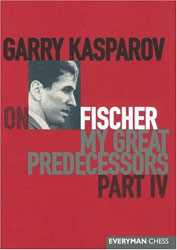 In Garry Kasparov On My Great Predecessors, Part 4 the author described the situation after the thirteenth games:
In Garry Kasparov On My Great Predecessors, Part 4 the author described the situation after the thirteenth games:
"It is probable that, after such a dramatic defeat, Spassky finally realised at heart that he was no longer destined to catch up. The challenger was leading by +3. And although subsequently the match initiative passed to Spassky, he was quite unable to win: all the time he was lacking a little something. What told, apparently, was the psychological blow that he suffered at the start of the match. In the 14th game he spoiled things in the endgame, in the 15th he 'achieved a strategically won position, but in the tactical sense he was not up to the mark' (Bondarevsky), and in the 16th he easily equalised in the Exchange Variation of the Ruy Lopez and even had a small advantage, but Fischer defended himself...
The match was inexorably coming to a head, but despite all his efforts, Spassky was unable to reduce the deficit. 'In the last eight games nearly all the time I felt that Fischer was like a large fish in my hands,' he lamented after the match, 'but a fish is slippery and hard to hold on to, and at certain moments I let him slip. And then again the psychological torment would begin. Everything had to be begun again from the start...' He certainly had reason to feel despondent."
Fischer too had his problems. Apparently he thought that he would easily finish off the match, and such fierce resistance by Spassky came as an unpleasant surprise to him. Bobby again became nervous.
Byrne in Chess Life
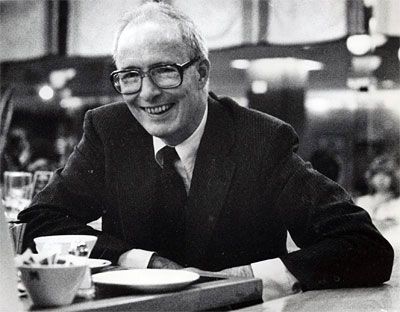
Robert Byrne | Photo: Burt Hochberg
GM Robert Byrne, (April 20, 1928 – April 12, 2013), was US Champion in 1972, World Championship Candidate in 1974, nine times member of the US Olympiad team (from 1952 to 1976), university professor and New York Times chess columnist (from 1972 to 2006). He was a good friend whom I met on a number of occasions. I especially remember a visit to his home in Ossining, New York, where we had dinner and then, over glasses of wine, he spent hours telling me about his 1972 stay in Reykjavik. He showed me games on a chessboard and described what he had experienced at the time. I also got his book on the match, with a nice dedication.
After the very dramatic game 13 Robert, reporting from Reykjavik, wrote:
"That monumental battle knocked both players for a loop. Spassky was granted a postponement on the advice of match doctor Uifar Thordarsson, who rescheduled Sunday's round 14 for Tuesday. That was still too soon. The game produced a comedy of errors, with first Fischer blundering a pawn away and then Spassky following right behind, giving the pawn back for nothing. Not even these two stalwarts are immune from chess nerves. Finally, shocked into sobriety by their glaring errors, they succeeded in quietly drawing without further mishap."
Here are his notes for Chess Life and Review (November 1972, pp. 686-687):

[Event "Reyjkavik World Championship (14)"] [Site "Reykjavik"] [Date "1972.08.15"] [Round "14"] [White "Fischer, Robert James"] [Black "Spassky, Boris Vasilievich"] [Result "1/2-1/2"] [ECO "D37"] [WhiteElo "2785"] [BlackElo "2660"] [Annotator "Byrne,Robert"] [PlyCount "80"] [EventDate "1972.07.11"] [EventType "match"] [EventRounds "21"] [EventCountry "ISL"] [SourceTitle "MainBase"] [Source "ChessBase"] [SourceDate "1999.07.01"] 1. c4 {For the thrid time in the match Fischer adopts a Queenside opening rather than 1.e4, which he played only in games 4 and 10.} e6 2. Nf3 d5 3. d4 Nf6 4. Nc3 Be7 {Spassky likes to play against the semi-classical 4...c4 when he has White and therefore avoids taking the Black side of it here. I wonder what Fischer would have used to oppose it.} 5. Bf4 {In my opinion, putting the Bishop on f4 is weaker than 5.Bg5, which exerts more pressure on the center, but in the last five years this tamer variation has become popular. It enables Black to free his game by an early ...c4, but then White has the possibility of giving him an isolated QP, against which Fischer likes to operate.} O-O 6. e3 c5 7. dxc5 Nc6 8. cxd5 exd5 9. Be2 Bxc5 {So Fischer has gotten the isolated Black QP as a target to work on, but his pieces are not well placed to apply pressure.} 10. O-O Be6 11. Rc1 Rc8 {[#]} 12. a3 (12. Nxd5 $2 Qxd5 13. Qxd5 Nxd5 14. Rxc5 Nxf4 15. exf4 Nd4 $1 16. Re5 Nxe2+ 17. Rxe2 Bc4 {wins the Exchange for Black in an easily won endgame.}) 12... h6 13. Bg3 $6 {This is no improvement in the Bishop's position since it comes under attack from a Knight as soon as Black plays ...Ne4.} (13. h3 {would have been better, but Bobby doesn't seem to have the feel for this type of classical position.}) 13... Bb6 {Spassky handles isolated-pawn positions with a virtuosity rare in contemporary chess and this move is a small proof of his judgment. The Bishop is better placed on b6 than on e7, since it bears on the blockading square d4. He does not fear 14.Na4 because he can centralize strongly by ...Ne4. Moreover, he now threatens ...d4.} 14. Ne5 Ne7 $1 {White had the threat of exchanging a pair of minor pieces, because the isolated pawn gets weaker as the board becomes uncluttered. Spassky not only sidesteps the exchange, he prepares to bring the Knight to the excellent square f5. He doesn't give Fischer a chance to make anything out of the isolated pawn and the game is perfectly level.} ( 14... d4 $2 15. Nxc6 Rxc6 16. exd4 Bxd4 17. Bf3 Rb6 18. b4 $1 {gives White a great advantage with the Black Rook badly offside and the chance to penetrate on the QB file after Na4.}) 15. Na4 Ne4 16. Rxc8 Bxc8 17. Nf3 Bd7 18. Be5 ({ As Spassky has correctly forseen.} 18. Nxb6 Qxb6 {just develops the Black game, allowing him a Queenside initiative.}) 18... Bxa4 {Another good move by Spassky, who is well aware that Knights often work better than Bishops in isolated-pawn positions.} 19. Qxa4 Nc6 20. Bf4 {[#]} Qf6 21. Bb5 $2 {With all his pieces centralized, Spassky has the initiative. This outright blunder could have cost the game.} ({The only move I can find to hold the line for Fischer is} 21. Qb5 {for} d4 22. Qd5 Re8 23. Bd3 Nxf2 $2 (23... Nc5 {would not get Black anywhere.} 24. Bb1 Ne6 25. Qe4 {and White defends all threats by his own of mate in three.}) 24. Kxf2 dxe3+ 25. Kg3 g5 26. Nxg5 hxg5 27. Qxg5+ Qxg5+ 28. Bxg5 {is in White's favor.}) 21... Qxb2 22. Bxc6 Nc3 $1 {Fischer is now forced to exchange Queens, heading for a pawn-down endgame.} 23. Qb4 (23. Be5 Nxa4 24. Bxb2 bxc6 {is even worse than the text continuation.}) 23... Qxb4 24. axb4 bxc6 25. Be5 Nb5 26. Rc1 Rc8 27. Nd4 f6 $2 (27... Nxd4 28. Bxd4 Kf8 { would have presented considerable technical difficulties in the way of winning, but the move played gives the pawn back for nothing.}) 28. Bxf6 Bxd4 ({White can hold after} 28... gxf6 29. Nxb5 {just as well.}) 29. Bxd4 Nxd4 30. exd4 Rb8 31. Kf1 ({There is no point in taking chances with} 31. Rxc6 a5 $1) 31... Rxb4 32. Rxc6 Rxd4 33. Ra6 Kf7 34. Rxa7+ Kf6 {The following play is totally unnecessary except that these players never know when it's time to quit.} 35. Rd7 h5 36. Ke2 g5 37. Ke3 Re4+ 38. Kd3 Ke6 39. Rg7 Kf6 40. Rd7 Ke6 1/2-1/2
No other World Champion was more infamous both inside and outside the chess world than Bobby Fischer. On this DVD, a team of experts shows you the winning techniques and strategies employed by the 11th World Champion.
Grandmaster Dorian Rogozenco delves into Fischer’s openings, and retraces the development of his repertoire. What variations did Fischer play, and what sources did he use to arm himself against the best Soviet players? Mihail Marin explains Fischer’s particular style and his special strategic talent in annotated games against Spassky, Taimanov and other greats. Karsten Müller is not just a leading international endgame expert, but also a true Fischer connoisseur.
Anti-Najdorf battle
In Chess Life & Review December 1972 Robert Byrne writes:
"In game 15 Fischer returned to his favorite Najdorf Sicilian Defense, but even though he avoided the "poisoned pawn" variation which Spassky blasted in the 11th game, he still could not escape trouble. Boris struck with another of his powerful anti-Najdorf weapons as early as move 12 and followed up sharply to force the win of a pawn two moves later, landing Bobby in a lost game. However, impatient to force the position, Boris precipitously advanced his King pawn, throwing the game into a turmoil of complications, and also throwing away the win. When Spassky spurned the draw that was his for the taking, Fischer came at him with a savage attack, and after one more error by Spassky the challenger had a won game. Playing as though the world speed chess championship was at stake, despite ample time on his clock, Fischer finally made enough errors of his own to ensure Spassky the draw."
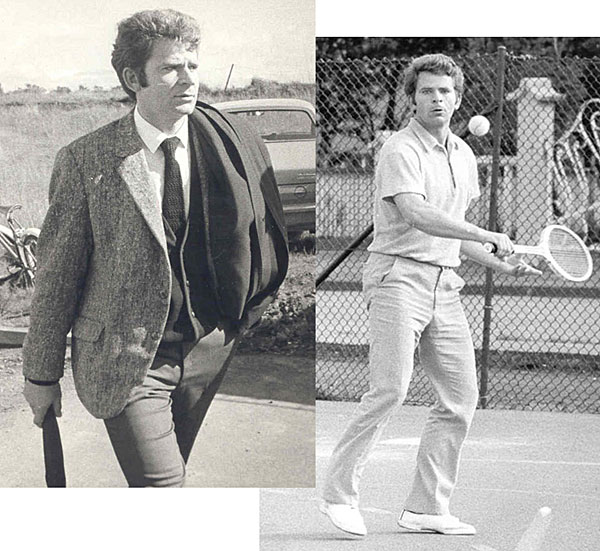
Spassky relaxing during the match in Reykjavik | Photo: Skáksamband Íslands
We bring you abbreviated notes by GM Robert Byrne in Chess Life & Review December 1972, pp. 743-745. The game is extensively analysed there, but you can work out many of the tactical details by switching on an engine and analysing on our game viewer, below:

[Event "Reykjavik World Championship (15)"] [Site "Reykjavik"] [Date "1972.08.17"] [Round "15"] [White "Spassky, Boris Vasilievich"] [Black "Fischer, Robert James"] [Result "1/2-1/2"] [ECO "B99"] [WhiteElo "2660"] [BlackElo "2785"] [PlyCount "86"] [EventDate "1972.07.11"] [EventType "match"] [EventRounds "21"] [EventCountry "ISL"] [SourceTitle "MainBase"] [Source "ChessBase"] [SourceDate "1999.07.01"] 1. e4 c5 2. Nf3 d6 3. d4 cxd4 4. Nxd4 Nf6 5. Nc3 a6 6. Bg5 e6 7. f4 Be7 8. Qf3 Qc7 9. O-O-O Nbd7 10. Bd3 b5 11. Rhe1 Bb7 12. Qg3 {[#]It is extremely difficult to answer this move.} O-O-O {This seems to be the only move, but Spassky refutes it at once.} 13. Bxf6 $1 {This move should have won the game since it forces the gain of a pawn.} Nxf6 ({Fischer cannot reply} 13... Bxf6 $2 14. Bxb5 $1 axb5 15. Ndxb5 Qa5 16. Nxd6+ Kb8 17. e5 Be7 18. Nxf7 {for Spassky will emerge with Rook and four pawns for two minor pieces.}) ({Nor can the material be guarded by} 13... gxf6 14. Qg7 Rdf8 15. Nxe6 $1 fxe6 16. Qxe7 { when Black doesn't even have the solace of the two Bishops, which he obtains in the actual game continuation.}) 14. Qxg7 Rdf8 15. Qg3 b4 16. Na4 Rhg8 17. Qf2 Nd7 18. Kb1 Kb8 19. c3 $1 {Opening the Queen Bishop file exposes the Black King for a decisive attack, which Boris could have carried through at move 23.} Nc5 20. Bc2 bxc3 21. Nxc3 Bf6 22. g3 h5 23. e5 $2 {This is a silly stunt in a winning position.} ({Instead Spassky should have played} 23. Re3 {with the plan of continuing Na4 to exchange Knights, for if Black were to recapture with the Queen, the White Rooks come storming through on the c and b-files, while recapturing with the pawn is met by Nf3 followed by e5 and Be4, allowing White to exploit his extra pawn from the haven of a sound position.}) 23... dxe5 24. fxe5 Bh8 {To retreat the Bishop to e7 would concede a point to Spassky's pawn advance, but this move keeps the e-pawn dangling on the hook.} ( {The trap involves} 24... Bxe5 $2 25. Ndb5 axb5 26. Nxb5 Qb6 27. Rxe5 Qxb5 28. Rxc5 {which of course gives White a totally overwhelming game.}) 25. Nf3 Rd8 26. Rxd8+ Rxd8 $6 27. Ng5 Bxe5 28. Qxf7 Rd7 29. Qxh5 $6 {Spassky is foolhardy in continuing to try for a win.} ({He should be happy to hold the draw by} 29. Qe8+ Rd8 30. Qf7 {etc.}) 29... Bxc3 $1 {Bobby tears a small hole in the enemy King position and comes on like a tornado!} ({Fischer would not be able to continue} 29... Ka7 {since} 30. Nxe6 {both wins a pawn and exchanges off one of the attacking pieces.}) 30. bxc3 Qb6+ 31. Kc1 $4 ({Spassky's last chance to hold on was} 31. Ka1 Qa5 32. Qh8+ Ka7 33. Rb1 e5 $1 34. Rb4 Rd2 35. Bb1 Nd3 36. Rxb7+ {and Black cannot avoid perpetual check except by running into mate or loss of material.}) 31... Qa5 32. Qh8+ Ka7 33. a4 Nd3+ $1 {The simplest most direct win is to strip White of his best defensive piece.} 34. Bxd3 Rxd3 35. Kc2 {[#]} Rd5 $6 ({Bobby could have won directly with} 35... Rd8) ({actually} 35... Rd7 {-- ed.}) 36. Re4 $1 Rd8 $6 37. Qg7 Qf5 38. Kb3 Qd5+ $2 {This does it for the last time and Boris gets away with a draw.} 39. Ka3 Qd2 40. Rb4 $1 { At last White's mating threats balance Black's.} Qc1+ 41. Rb2 Qa1+ 42. Ra2 Qc1+ 43. Rb2 Qa1+ 1/2-1/2
Byrne: "At this stage of the match, the hard-fought relentless chess both players had been serving up throughout was taking its toll. Like two game but battered prizefighters, Boris and Bobby were still swinging from the heels but the blows were striking just off center."
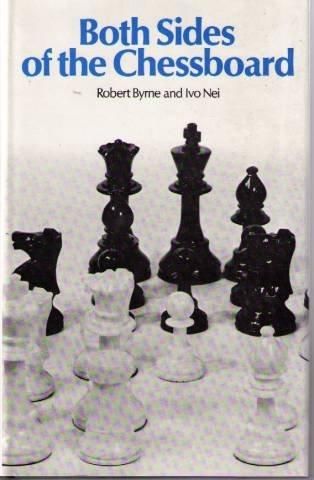 Byrne's book
Byrne's book
An Analysis of the Fischer/Spassky Chess Match Paperback – by Robert Byrne and Iivo Nei.
An analysis of the 1972 World Championship Chess Match from both sides of the chessboard – a Russian and an American analysis. After all the “rush” books on the most dramatic chess confrontation in history – Bobby Fischer vs. Boris Spassky – have had their brief dry in the sun, this deeply considered and unique volume makes its bid for classic status.
International Grandmaster Robert Byrne, distinguished chess columnist for The New York Times and the 1972 U.S. Chess Champion, who is justly famed for the thoroughness, accuracy and penetrating insight of his chess analysis:
- He debunks much of the erroneous analysis published within weeks of the match in books admirable for their timeliness but understandably lacking in depth;
- He provides a new view of the games since he is aware of the tensions and psychological burdens of both great masters.'
International Grandmaster Ivo Nei, a Spassky confidant, one of Russia's leading theoreticians and a member of the Soviet team at Reykjavik – and himself a brilliant annotator:
- He reveals many intriguing secrets of the match for the first time anywhere;
- He sheds new light on the hitherto dark side of Soviet chess, pre-match preparations.
The definitive book on the match . . . objective, thorough, revealing, penetrating . . . no chess lover will want to be without. A few used copies of this book are available from AbeBooks.
On August 18th 1972, exactly 45 years ago, the 15th game ended and Fischer had retained his three-point lead.

Move times and adjournments
Here are the times for games fourteen and fifteen, as recorded by Lawrence Stevens, who visited the match in Reykjavik and jotted them down from the video screens:
|
Game 14, August 15th, 1972
Fischer Spassky
White Black
(ar) (0:07) (ar) (-:01)
1. c4 (0:07)
(Spassky appeared one minute before the game was to start. By the time Fischer arrived and made his move, Spassky had left and did not return until 3 minutes later.)
(ar) (0:03)
1. e6 (0:04)
2. Nf3 (0:07) d5
3. d4 (0:08) Nf6 (0:05)
4. Nc3 (0:08) Be7 (0:05)
5. Bf4 (0:08) 0-0 (0:11)
6. e3 (0:08) c5 (0:14)
7. dxc5 (0:08) Nc6 (0:15)
8. cxd5 (0:09) exd5 (0:20)
9. Be2 (0:09) Bxc5 (0:20)
10. 0-0 (0:09) Be6 (0:23)
11. Rc1 (0:11) (0:27)
(Spassky was gone for 4 minutes and so took only 9 minutes for his 11th.)
11. ... Rc8 (0:36)
12. a3 (0:12) h6 (0:47)
13. Bg3 (0:16) Bb6 (0:56)
14. Ne5 (0:24) Ne7 (1:08)
15. Na4 (0:45) Ne4 (1:17)
16. Rxc8 (0:48) Bxc8 (1:17)
17. Nf3 (0:53) Bd7 (1:27)
18. Be5 (1:02) Bxa4 (1:27)
19. Qxa4 (1:02) Nc6 (1:27)
20. Bf4 (1:08) Qf6 (1:28)
21. Bb5 (1:16) Qxb2 (1:35)
22. Bxc6 (1:19) Nc3 (1:37)
23. Qb4 (1:22) Qxb4 (1:39)
24. axb4 (1:22) bxc6 (1:39)
25. Be5 (1:23) Nb5 (1:41)
26. Rc1 (1:24) Rc8 (1:46)
27. Nd4 (1:26) f6 (1:57)
28. Bxf6 (1:28) Bxd4 (2:06)
29. Bxd4 (1:28) Nxd4 (2:07)
30. exd4 (1:28) Rb8 (2:07)
31. Kf1 (1:36) Rxb4 (2:07)
32. Rxc6 (1:36) Rxd4 (2:09)
33. Ra6 (1:36) Kf7 (2:09)
34. Rxa7+ (1:36) Kf6 (2:10)
35. Rd7 (1:37) h5 (2:10)
36. Ke2 (1:39) g5 (2:11)
37. Ke3 (1:42) Re4+ (2:13)
38. Kd3 (1:43) Ke6 (2:13)
39. Rg7 (1:46) Kf6 (2:15)
40. Rd7 Ke6
½-½ |
Game 15, August 17-18, 1972
Spassky Fischer
White Black
(ar) (0:04)
1. e4 (0:00) c5 (0:04)
(Spassky left after making his first move and returned 3 minutes after Fischer made his move.)
(ar) (0:03)
2. Nf3 (0:03) d6 (0:05)
3. d4 (0:03) cxd4 (0:05)
4. Nxd4 (0:03) Nf6 (0:05)
5. Nc3 (0:03) a6 (0:05)
6. Bg5 (0:04) e6 (0:05)
7. f4 (0:05) Be7 (0:05)
8. Qf3 (0:05) Qc7 (0:05)
9. 0-0-0 (0:07) Nbd7 (0:05)
10. Bd3 (0:07) b5 (0:10)
11. Rhe1 (0:07) Bb7 (0:12)
12. Qg3 (0:07) 0-0-0 (0:43)
13. Bxf6 (0:29) Nxf6 (1:02)
14. Qxg7 (0:34) Rdf8 (1:07)
15. Qg3 (0:41) b4 (1:07)
16. Na4 (0:44) Rhg8 (1:25)
17. Qf2 (0:47) Nd7 (1:28)
18. Kb1 (1:06) Kb8 (1:34)
19. c3 (1:15) Nc5 (1:39)
20. Bc2 (1:19) bxc3 (1:41)
21. Nxc3 (1:21) Bf6 (1:42)
22. g3 (1:25) h5 (1:45)
23. e5 (1:37) dxe5 (1:48)
24. fxe5 (1:37) Bh8 (1:51)
25. Nf3 (1:44) Rd8 (1:56)
26. Rxd8+ (1:46) Rxd8 (1:56)
27. Ng5 (1:47) Bxe5 (1:59)
28. Qxf7 (1:48) Rd7 (1:59)
29. Qxh5 (1:56) Bxc3 (2:00)
30. bxc3 (1:56) Qb6+ (2:01)
31. Kc1 (2:03) Qa5 (2:01)
32. Qh8+ (2:12) Ka7 (2:01)
33. a4 (2:13) Nd3+ (2:05)
34. Bxd3 (2:15) Rxd3 (2:05)
35. Kc2 (2:17) Rd5 (2:07)
36. Re4 (2:18) Rd8 (2:10)
37. Qg7 (2:20) Qf5 (2:12)
38. Kb3 (2:22) Qd5+ (2:18)
39. Ka3 (2:23) Qd2 (2:21)
40. Rb4 (2:27) Qc1+ (2:25)
41. Rb2(s) (2:35) (ar) (2:34)
(Fischer was 9 minutes late for the adjournment.)
41. ... Qa1+ (2:34)
42. Ra2 (2:36) Qc1+
43. Rb2 Qa1+
½-½ |
Previous articles
Bobby Fischer in Iceland – 45 years ago (1)
In the final week of June 1972 the chess world was in turmoil. The match between World Champion Boris Spassky and his challenger Bobby Fischer was scheduled to begin, in the Icelandic capital of Reykjavik, on July 1st. But there was no sign of Fischer. The opening ceremony took place without him, and the first game, scheduled for July 2nd, was postponed. Then finally, in the early hours of July 4th, Fischer arrived. Frederic Friedel narrates.
Bobby Fischer in Iceland – 45 years ago (2)
The legendary Match of the Century between Boris Spassky and Bobby Fischer was staged in the Laugardalshöllin in Reykjavik. This is Iceland’s largest sporting arena, seating 5,500, but also the site for concerts – Led Zeppelin, Leonard Cohen and David Bowie all played there. 45 years after the Spassky-Fischer spectacle Frederic Friedel visited Laugardalshöllin and discovered some treasures there.
Bobby Fischer in Iceland – 45 years ago (3)
On July 11, 1992 the legendary Match of the Century between Boris Spassky and Bobby Fischer finally began. Fischer arrived late, due to heavy traffic. To everybody's surprise he played a Nimzo instead of his normal Gruenfeld or King's Indian. The game developed along uninspired lines and most experts were predicting a draw. And then, on move twenty-nine, Fischer engaged in one of the most dangerous gambles of his career. "One move, and we hit every front page in the world!" said a blissful organiser.
Bobby Fischer in Iceland – 45 years ago (4)
7/16/2017 – The challenger, tormented by the cameras installed in the playing hall, traumatically lost the first game of his match against World Champion Boris Spassky. He continued his vigorous protest, and when his demands were not met Fischer did not turn up for game two. He was forfeited and the score was 0-2. Bobby booked a flight back to New York, but practically at the very last moment decided to play game three – in an isolated ping-pong room!
Bobby Fischer in Iceland – 45 years ago (5)
7/21/2017 – After three games in the Match of the Century the score was 2:1 for the reigning World Champion. In game four Spassky played a well-prepared Sicilian and obtained a raging attack. Fischer defended tenaciously and the game was drawn. Then came a key game, about which the 1972 US Champion and New York Times and Chess Life correspondent GM Robert Byrne filed reports. In Reykjavik chess fan Lawrence Stevens from California did something extraordinary: he manually recorded the times both players had spent on each move.
Bobby Fischer in Iceland – 45 years ago (6)
7/26/2017 – In the sixth installment of our series we offer readers a glimpse of what had been happening behind the scenes of “The Match of The Century”, especially in the Russian camp. A tense Boris Spassky, cajoled by seconds Efim Geller and Nikolai Krogius, nevertheless failed to perform to the dismay of his friends and admirers. It’s also the story of a gamble that could have hurtled Bobby down the precipice in that fateful Game 6 of the match. A cautionary tale and object lesson for aspiring players.
Bobby Fischer in Iceland – 45 years ago (7)
8/4/2017 – After the first two traumatic games World Champion Boris Spassky was leading 2-0 in the Match of the Century. But then Fischer started to play and struck back: in the next eight games he scored 6½ points, chalking up a 6.5-3.5 lead. Games 8, 9 and 10 were quite spectacular, and are the subject of today's report. Younger players will also learn about "adjournments" and how exactly "sealed moves" were handled. Some were born after these practices were abandoned.
Bobby Fischer in Iceland – 45 years ago (8)
8/9/2017 – After ten games in the World Championship match in Reykjavik, 1972, the score was 6½-3½ for Challenger Bobby Fischer. The match seemed virtually over – in the last eight games Boris Spassky had only managed to score 1½ points. "If it had been the best of 12 games, as in the Candidates matches, Spassky would already have been on his way home..." wrote Garry Kasparov in his Great Predessors book. In game 11 Boris took on the Poisoned Pawn variation of the Najdorf Sicilian, even though he had obtained a lost position in game seven. Take a look at what happened.
Bobby Fischer in Iceland – 45 years ago (9)
8/11/2017 – In game eleven of the World Championship match in Reykjavik, 1972, Boris Spassky had comprehensively outplayed the challenger in his favourite poisoned pawn variation of the Sicilian Defence. In game 12 he made a confident draw with black and Fischer realized his opponent was gaining ground. In the 13th game he abandoned the Sicilian and, to the chagrin of Spassky, played, for the first time in a top-level game – the Alekhine Defence. It turned into one of the most exciting battles of the match, and is beautifully annotated by GM Robert Byrne.
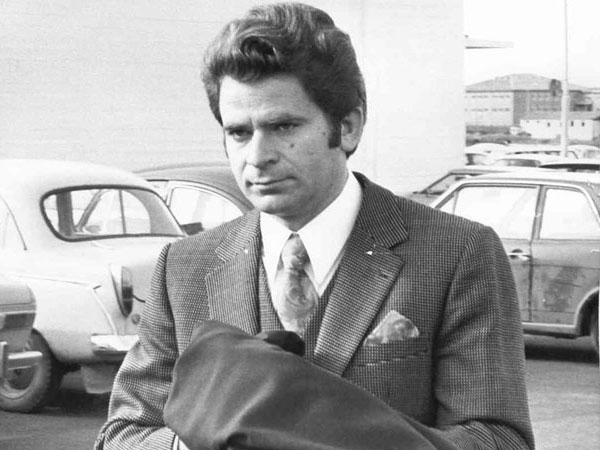



















 In
In 


 Byrne's book
Byrne's book





